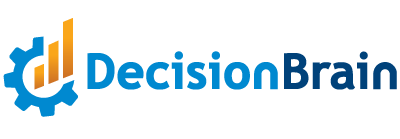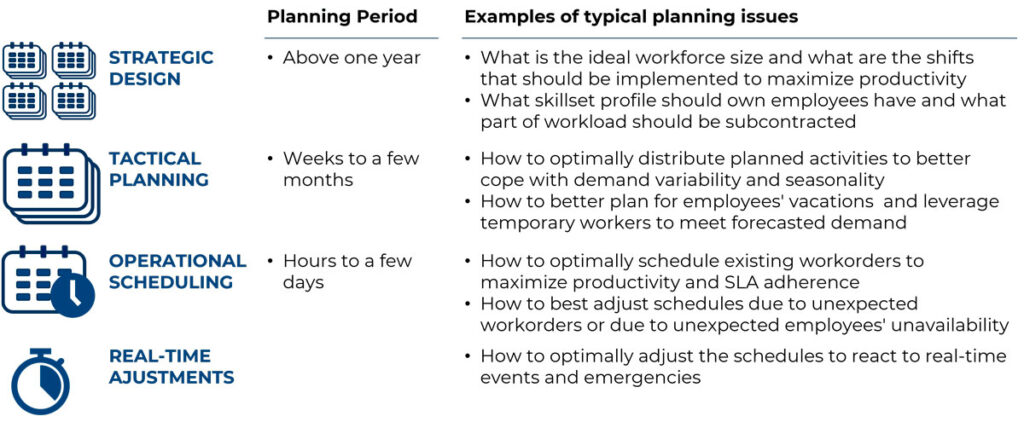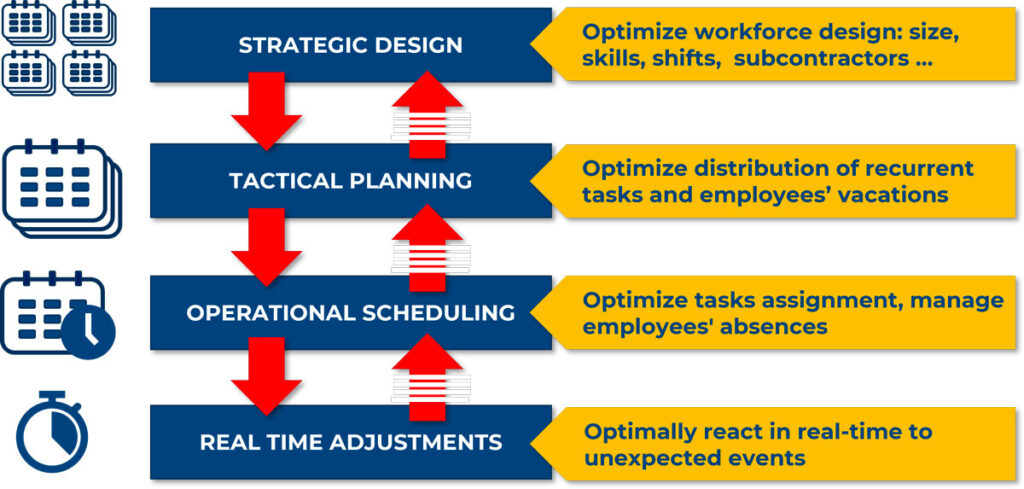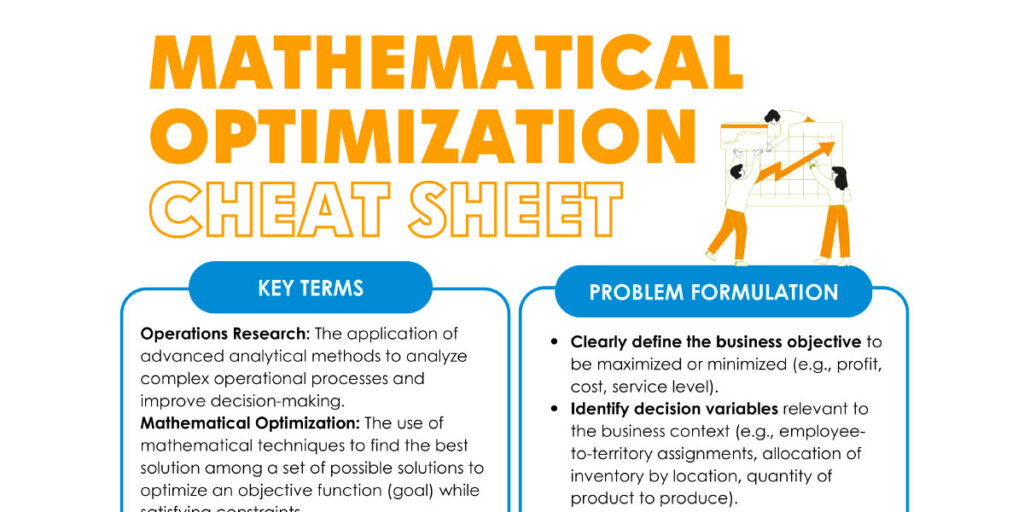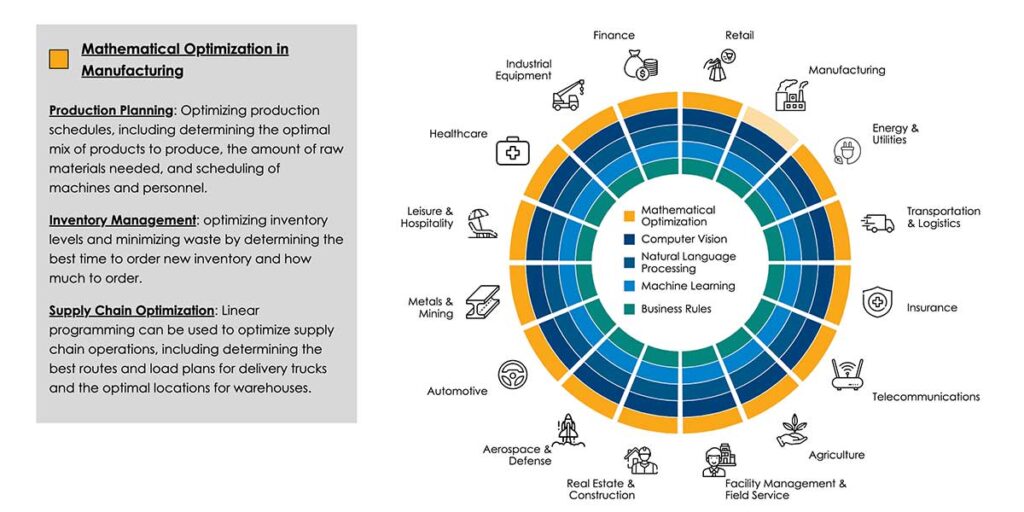Blog
Introduction to our Series - The Complete Guide to Workforce Optimization (WFO)
How to use advanced planning and scheduling techniques to keep employees and customers happy while operating efficiently and profitably
Welcome to our blog series, The Complete Guide to Workforce Optimization. We developed this guide for business leaders who are considering or have already begun leveraging advanced decision support software to make better workforce planning and scheduling decisions.
This in-depth guide is particularly relevant for organizations that manage large teams of employees in the field, such as maintenance and repair technicians, cleaning and sanitation workers, field sales representatives, caterers, security guards, construction workers and inspectors.
In this 6-Part guide, you will learn about:
What is Workforce Optimization (WFO)?
Workforce Optimization (WFO) is a very broad term but at its highest level, it’s a set of approaches to achieving business success through smart workforce management. Interestingly, the Wikipedia page on workforce optimization focuses almost entirely on contact centers, but we think workforce optimization is much broader.
This guide is focused on those aspects of WFO that relate to planning and scheduling. That’s because, for many industries, these activities tend to have the biggest and most measurable impact on business key performance indicators (KPIs). Planning and scheduling are also the functions in which almost all HR, workforce management and field service management systems fall short. That’s not surprising because these functions are rarely standardized across companies. The factors that go into scheduling warehouse workers at Amazon fulfillment centers are very different from those for scheduling agriculture inspectors, which are also different from those of appliance technicians.
What Kinds of Planning & Scheduling Problems Can Be Optimized?
Workforce optimization problems are usually classified based on time horizon, which is the time period that is considered when creating the plan. This chart gives a good overview of the types of WFO problems that are good candidates for optimization, broken down by planning period:
The Ultimate Goal: Fully Integrated Workforce Optimization
Like many things in life, so it is with workforce optimization in that it’s best to start small while dreaming big. No matter which WFO use case you begin with, remember that business success is greatest when optimizing along all 3 time horizons together. This can be well achieved with WFO systems by cascading the results of longer planning horizon systems as inputs into the shorter horizon systems. This kicks off a feedback loop that drives continuous improvement of plans and schedules.
The next articles on this workforce optimization series will be:
Part 1 Cataloging Employee Skills & Work Activities
Part 2 Benchmarking Performance Metrics
Part 3 Demand Planning
Part 4 Operational Scheduling
Part 5 Tactical Planning
Part 6 Strategic Planning
Can’t wait? Download the complete PDF guide now to get access to the content right away.
About the Author
Giulia Burchi is a Sr. Business Analyst with DecisionBrain. She brings extensive experience delivering advanced planning, scheduling, and workforce optimization solutions to organizations with large or distributed teams. She holds a master’s degree in Industrial Engineering from the University of Bologna in Italy.
